Vote for the GNPS 2024 Plant of the Year!
Each year, we celebrate one special native plant by selecting it as GNPS Plant of the Year (POY). The six nominated plants are featured below. POY online voting is EASY. Just go to the voting page*, click to make your selection, and press “Submit.” (If you are not already logged in, you will be prompted to do so before the voting page appears. If it does not appear immediately after logging in, come back here and click that voting page link again.) Online voting will remain open until November 30th. The last few years have seen some really close contests, with only a few votes separating the winner from the runner up. YOUR VOTE MATTERS! So get in there and pick the plant you think is best for POY 2024!
*If the link to the voting page above doesn’t work for you, try copying this in your browser: https://gnps.app.neoncrm.com/survey.jsp?surveyId=26&. You will have to log in as a member, and after doing so, it may be easiest just to click on the link again (or copy into your browser again).

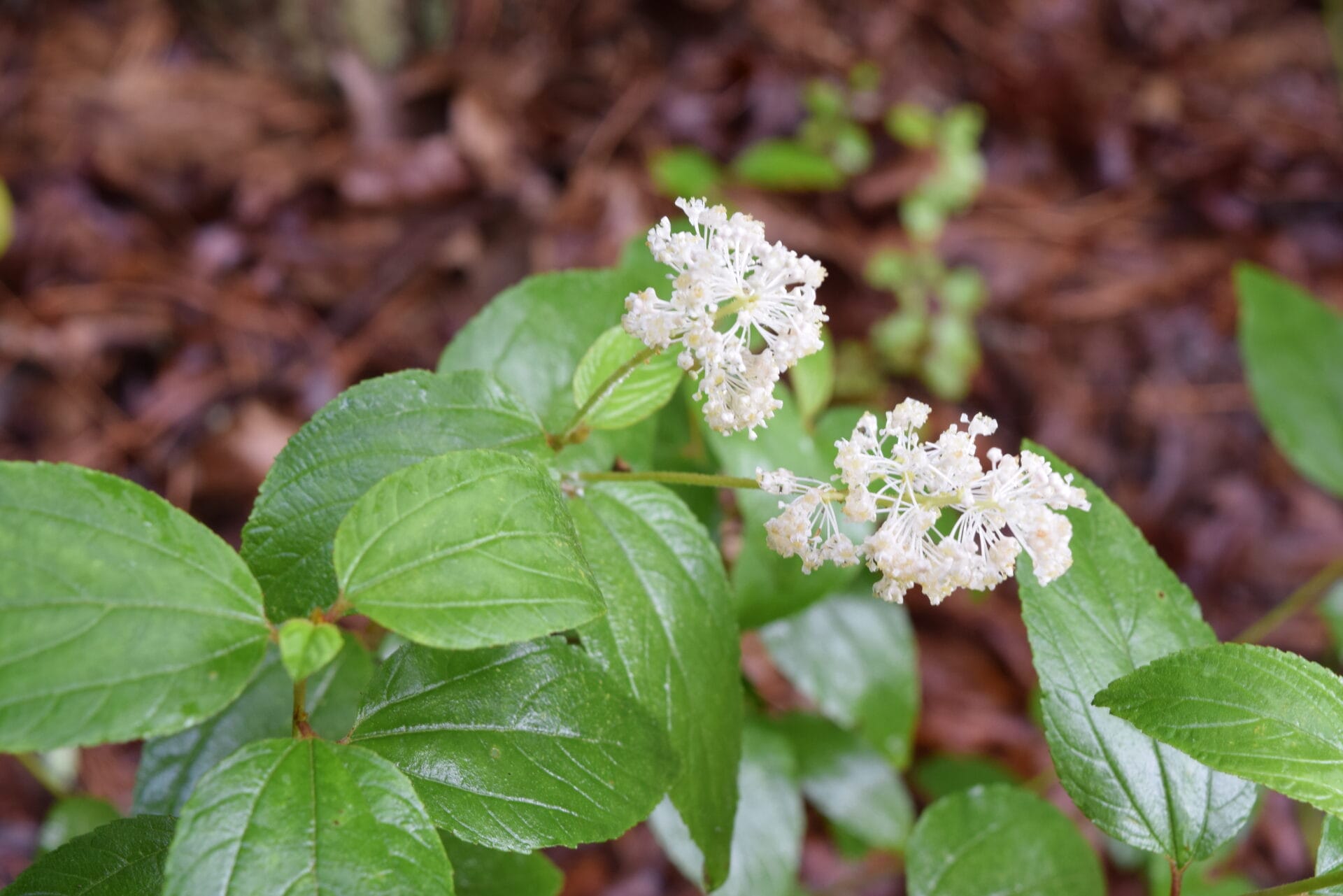
Ceanothus americanus
Common name: New Jersey Tea
Family: Rhamnaceae
Plant type: Shrub
New Jersey tea (Ceanothus americanus) is a deciduous, hardy, low-growing shrub, having deep, reddish-colored roots that confer resistance to fire and drought. It is an ideal species for rocky or sandy slopes, well-drained soils, and areas prone to erosion. Although it is not a legume, the shrub has the ability to fix atmospheric nitrogen thanks to a bacterial endophyte, Frankia ceanothi, that infects its root tubercles. Nitrogen fixation provides the plant with an advantage in poor soils, as it produces its own fertilizer. Also known as redroot, the shrub grows to 3’ tall and 5’ wide at maturity. Plants are woody near the base and herbaceous on top, with stem tips that often die back in winter. Alternate leaves are medium green and ovate, growing to 4” long and 2’ wide, tapering at the tips, with strong venation, serrated edges, and hairy, pale undersides. New Jersey tea blooms in late spring-early summer, producing 2-5” panicles of tiny, cup-shaped, white flowers extending from the stem tips and leaf axils. The fragrant blooms are highly attractive to birds and insects, making the plant an excellent choice for pollinator gardens. However, it is attractive to deer. New Jersey tea was used in colonial times as a caffeine-free tea substitute, and it has a long history as a medicinal herb, thanks to its astringent properties.
Text by Valerie Boss. Photos by Ellen Honeycutt.
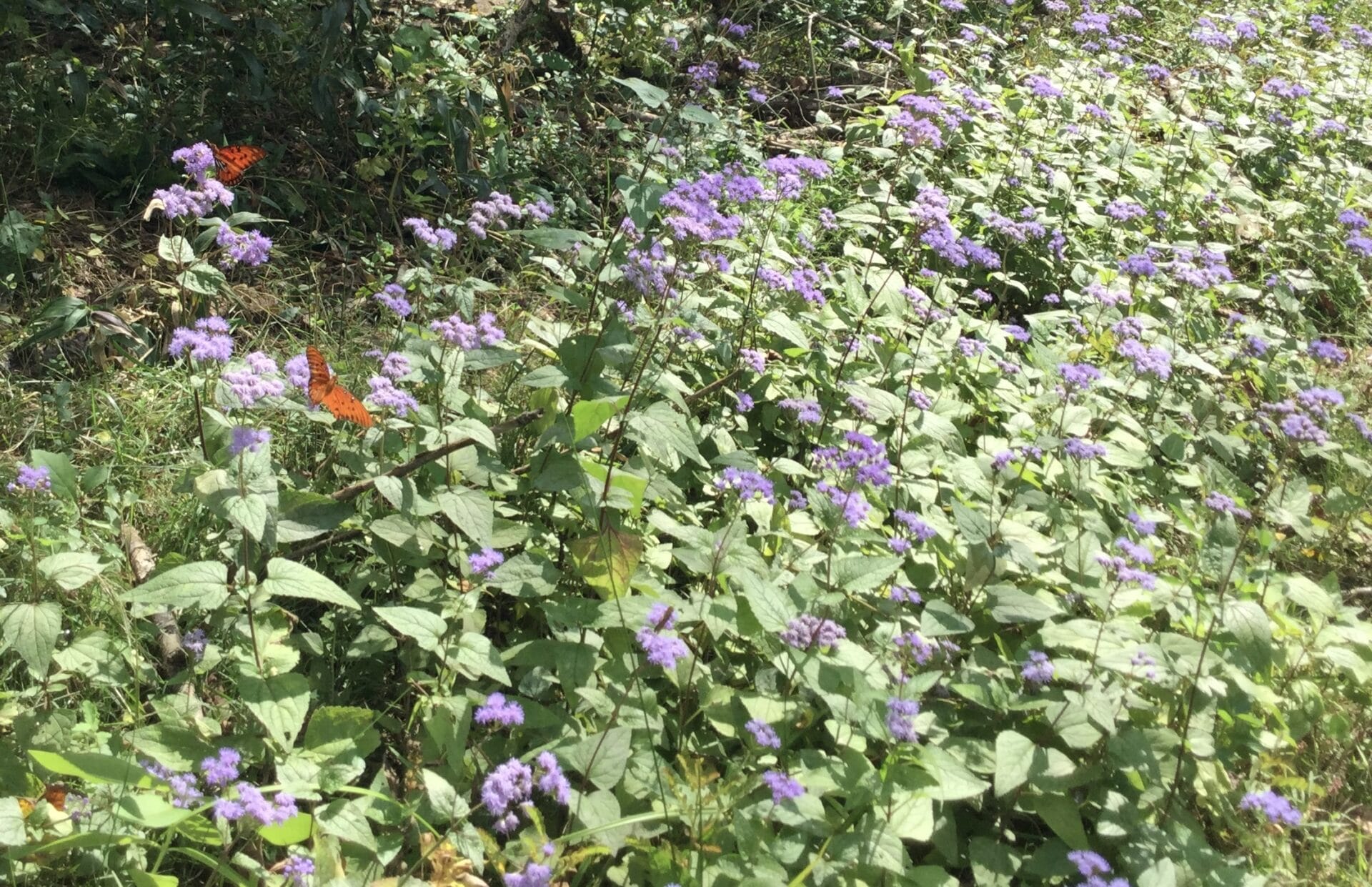
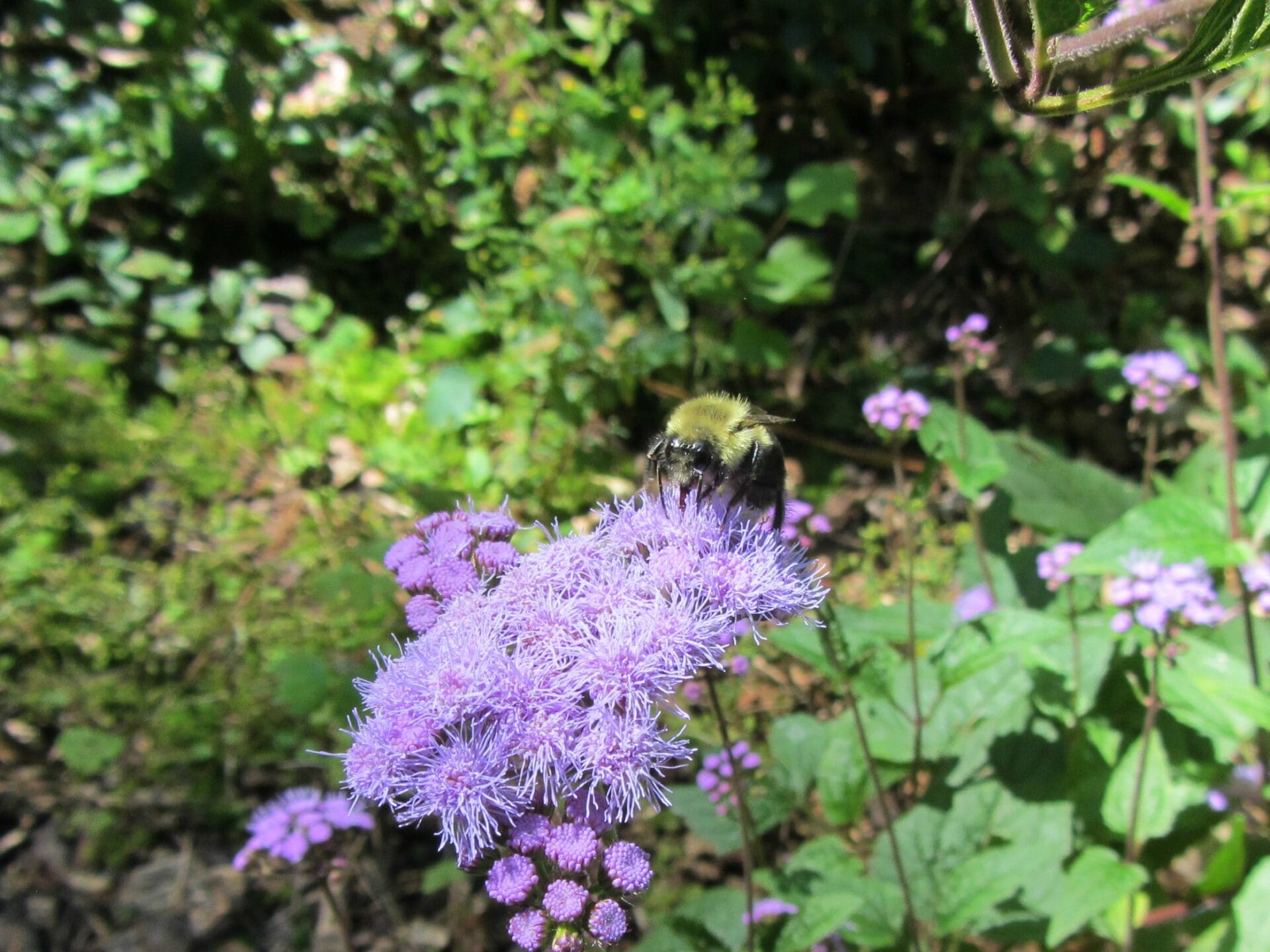
Concoclinium coelestinum
Common name: Blue mistflower
Family: Asteraceae
Plant type: Perennial
Blue mistflower (Concoclinium coelestinum), also known as wild ageratum, is a fall blooming perennial herb common to stream banks, roadsides, and wet meadows. It favors sunlit wetlands, but can thrive under average garden conditions if not allowed to dry out completely. Round, branched stems (1-2’ tall) and proximal leaf veins often have a reddish-purple tinge. Its foliage is unremarkable, with opposite leaves that are ovate-to-triangular, hairy, and toothed along the edges. What makes blue mistflower a great garden plant is its profusion of fluffy, purplish-blue flowers, which bloom from late summer until the first frost. The inflorescence is terminally located and flat-topped, and can contain almost 70 individual disk flowers, each up to ½” across. Interestingly, there are no ray flowers, even though the flowerheads are technically composites. Under favorable conditions, blue mistflower will spread vigorously both by rhizome and seed, and can form large, dense clumps. This tendency to spread makes the species both easy to propagate (by division, cuttings, or seed) and occasionally weedy. To control re-seeding, plants should be cut back after blooming ends. Pruning will also encourage a compact growth habit. Blue mistflower is attractive to butterflies, and is a wonderful addition to a moist wildflower meadow or pollinator garden.
Text by Valerie Boss. Photos by Valerie Boss (left) and Ellen Honeycutt (right).


Helianthus microcephalus
Common name: Small-headed sunflower
Family: Asteraceae
Plant type: Perennial
Small-headed sunflower (Helianthus microcephalus) has cheery golden flowers that burst with color as early summer blossoms fade. Its alternative name, small woodland sunflower, is misleading; the flower heads (1-3” diameter) may be small, but the plant itself can easily reach 6’ tall. The leaves of small-headed sunflower are medium green and generally opposite, but alternate towards the tops of the dark, upright, branching stems. Leaves are lanceolate in shape, 3-6” long and less than 2” wide, dotted with resin, and hairy, with either complete or serrated edges and short (less than 1”) petioles. Small-headed sunflower blooms from July through October. Its flowerheads are composites, typical of Helianthus, and indeed all members of the Asteraceae family. But unlike most members of the genus, microcephalus has few ray flowers (5-8). Both ray flowers (sterile) and central disc flowers are bright yellow, and only the disc flowers (perfect fertile, both pistillate and staminate) make seed. Underlying bracts are green, narrow, and pointed. This perennial herb grows in woodlands and along roadsides. Plant it in full sun or partial shade, in well-drained soils, in rock gardens or pollinator gardens, as a backdrop or mass planting. It is drought resistant once established and will spread by seed or rhizomes. Its abundant flowers attract butterflies and bees galore; and birds, particularly goldfinches, love its prolific seeds.
Text by Valerie Boss. Photos by Ellen Honeycutt.

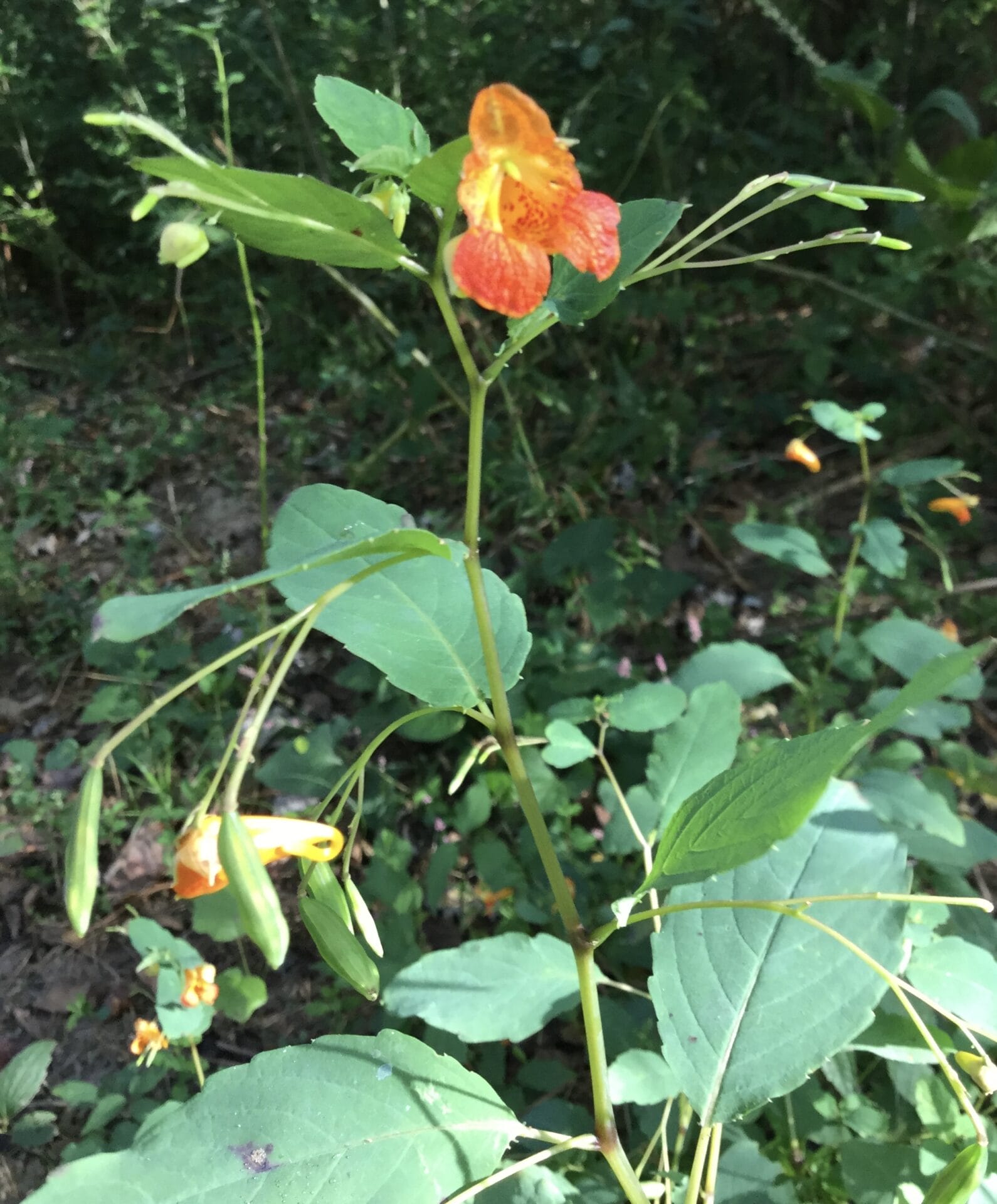
Impatiens capensis
Common name: Jewelweed
Family: Balsaminaceae
Plant type: Annual
Jewelweed (Impatiens capensis) is native to stream banks and moist woodlands throughout the eastern US and Canada. Its vibrant orange flowers provide bright splashes of color from early summer until mid-fall. Shaped like pouty-lipped trumpets, with a curlicue at the rear and slight speckling on the inside of the throat, these blossoms are attractive to insects, and a magnet for hummingbirds. Plants are 2-5’ tall, with spreading branches and succulent stems that are nearly translucent. Leaves are oval, toothed, and alternate. The juices of both the stems and crushed leaves are a folk remedy for the itch of poison ivy rash. Bursting seedpods, which mature in late summer through autumn, give the plant another common name: touch-me-not. Kids (and adults) love squeezing them and watching them explode! Jewelweed prefers shade, but will do fine in full sun if the soil is kept moist. It propagates by seed and can “travel” around the garden. To prevent re-seeding, cut the plant back or pull it out (the roots are shallow) before the pods mature. Interestingly, this species has apparently adapted to being browsed by deer. Populations of frequently browsed plants increase their seed production, ensuring that there will be plenty of jewelweed around for the future.
Text by Valerie Boss. Photos by Ellen Honeycutt (left) and Valerie Boss (right).
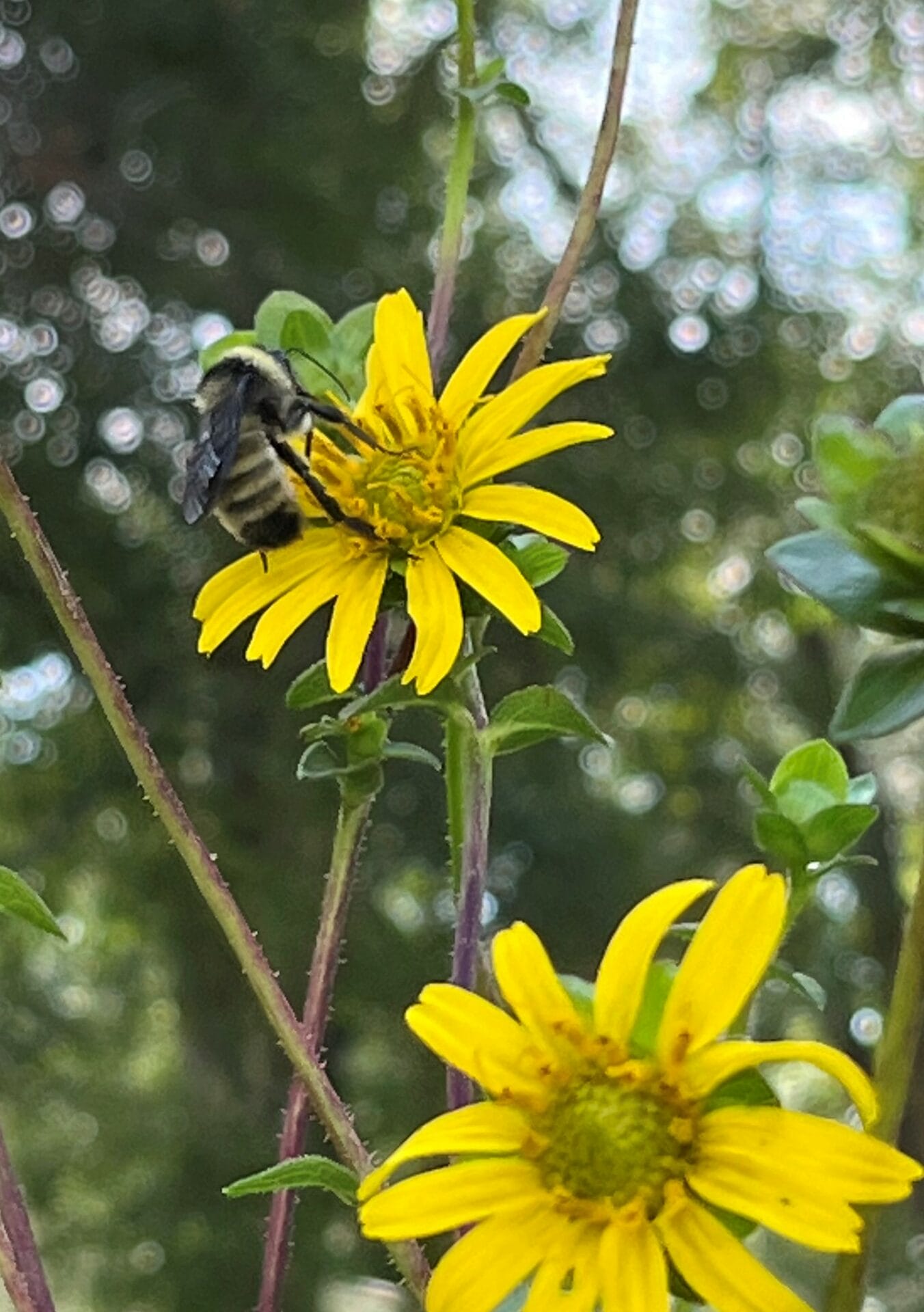
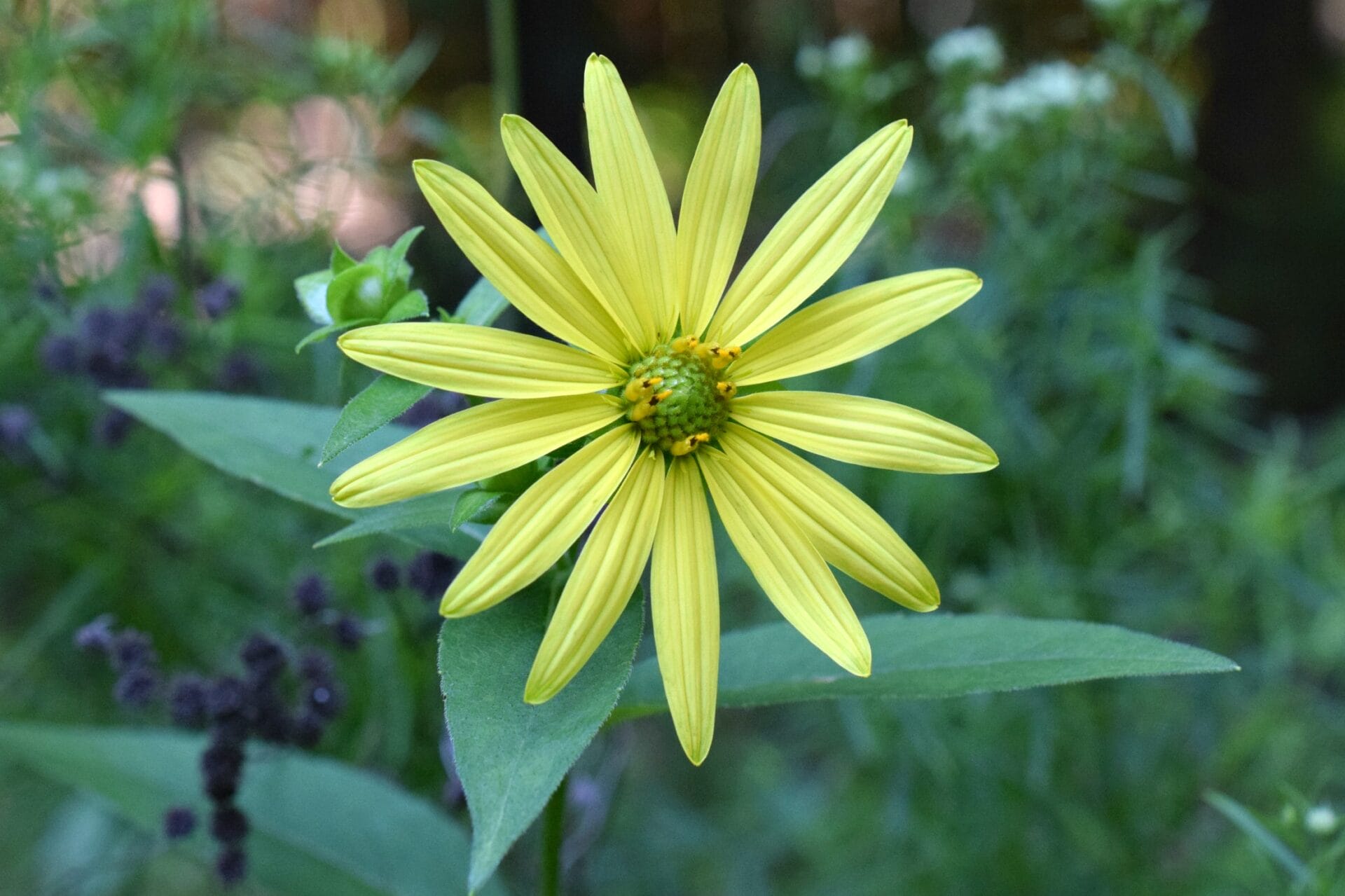
Silphium asteriscus
Common name: Starry rosinweed
Family: Asteraceae
Plant type: Perennial
Starry rosinweed (Silphium asteriscus) is characterized by copious yellow flowers (2.5-3” across) that bloom from June until October. There are 5 subspecies, the most common in Georgia being asteriscus var. asteriscus, described here. Plants vary in height, from 2’ to 7’ tall. Those less than 3’ tall have unbranched, upright, light green, hairy stems. In taller plants, the stems branch and may tilt over if they become top-heavy with flowers. The common name “rosinweed” refers to a bitter juice the exudes from the stems when cut. Early leaves form basal rosettes that disappear as leaves emerge on stems. These leaves grow up to 8” long and 3” wide, and are medium-dark green, rough on top, and either opposite or alternate in arrangement. Smaller leaves have complete edges; larger leaves have sparse, widely-spaced teeth. Flowerheads are composites, consisting of a ring of narrow yellow ray flowers surrounding a center of tiny green-ish yellow disc flowers. Silphium disc flowers have stamens, but no pistils. Thus, only ray flowers and not disc flowers produce seed—the exact opposite of its Asteraceae cousin, Helianthus. Starry rosinweed can be found in open woods, roadsides, and meadows. Well-suited to wildflower border plantings and meadow gardens, it thrives in full sun and well-drained soil, but can tolerate some shade. It will self-sow, is resistant to deer and drought, and is a wonderful pollinator plant, often covered in bees.
Text by Valerie Boss. Photos by Norris Wooton (left) and Ellen Honeycutt (right).
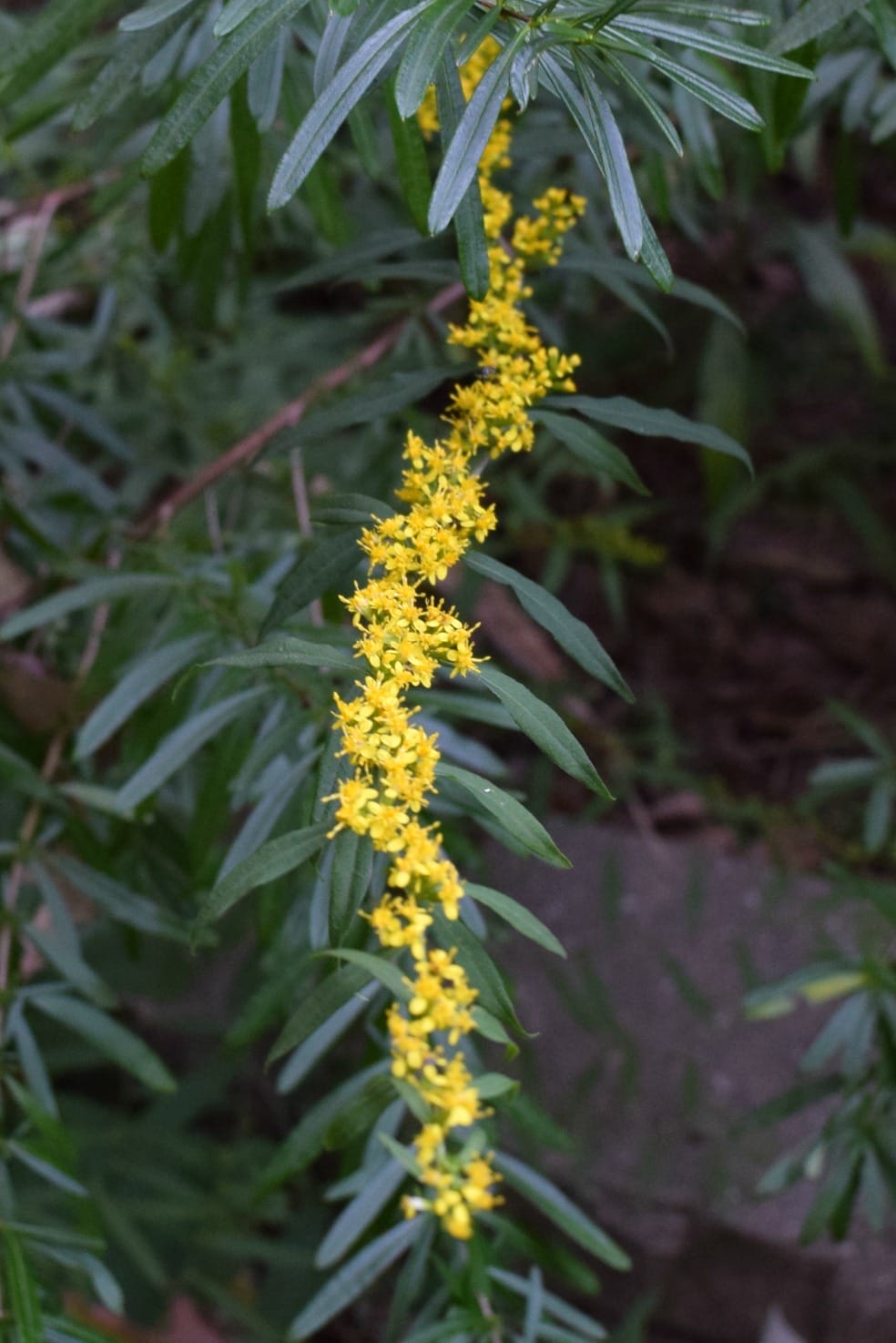
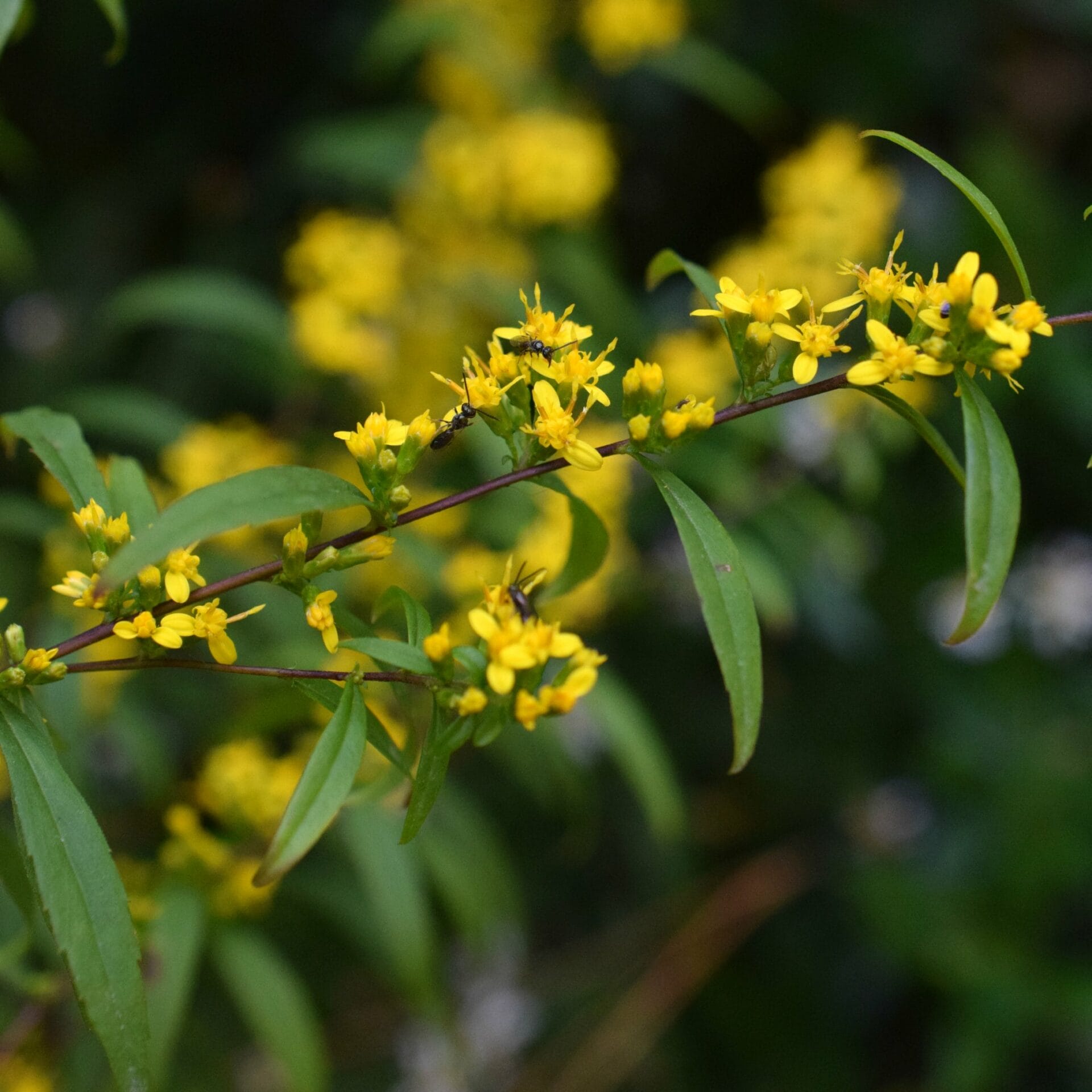
Solidago caesia
Common name: Blue-stemmed goldenrod
Family: Asteraceae
Plant type: Perennial
Blue-stemmed goldenrod (Solidago caesia), also known as wreath goldenrod, has dark green foliage decorated with tiny, bright flowers that cluster in the axils of its arching stems. The stems are generally wand-like and short, only 1-3’ at maturity, although they may occasional branch near the top. The Latin species name “caesia”, meaning “blue-grey”, refers to the distinctive purple or blue-grey tint of the rounded, hairless stems. Goldenrods are a “keystone genus”; that is, they are essential to the native ecology. This particular species forms clumps, with multiple stems extending from one or more rhizomes. Its smooth, alternate, toothed, leaves can be up to 5” long and ¼” wide, gradually diminishing in size as they go up the stem. From August through October, sprays of flowerheads (up to 20) burst from the leaf axils and stem termini. The little flowerheads (1/4” diameter) are composites, each comprised of 1-6 yellow ray flowers and 5-9 yellow disc flowers, with an involucre (basal “cup” of green bracts) 1-1.8” long. In fall tufted seeds form, to be dispersed by wind. Blue-stemmed goldenrod likes partial shade. It is native to mesic forests, shady bluffs, and creeksides. Like other goldenrods, it attracts many bees, and is a host for moths and butterflies that eat its leaves. Despite the presence of rhizomes, the species is very well-behaved. It is also somewhat deer resistant. These features make blue-stemmed goldenrod an excellent choice for native woodland gardens and shaded back yards.
Text by Valerie Boss. Photos by Ellen Honeycutt.
